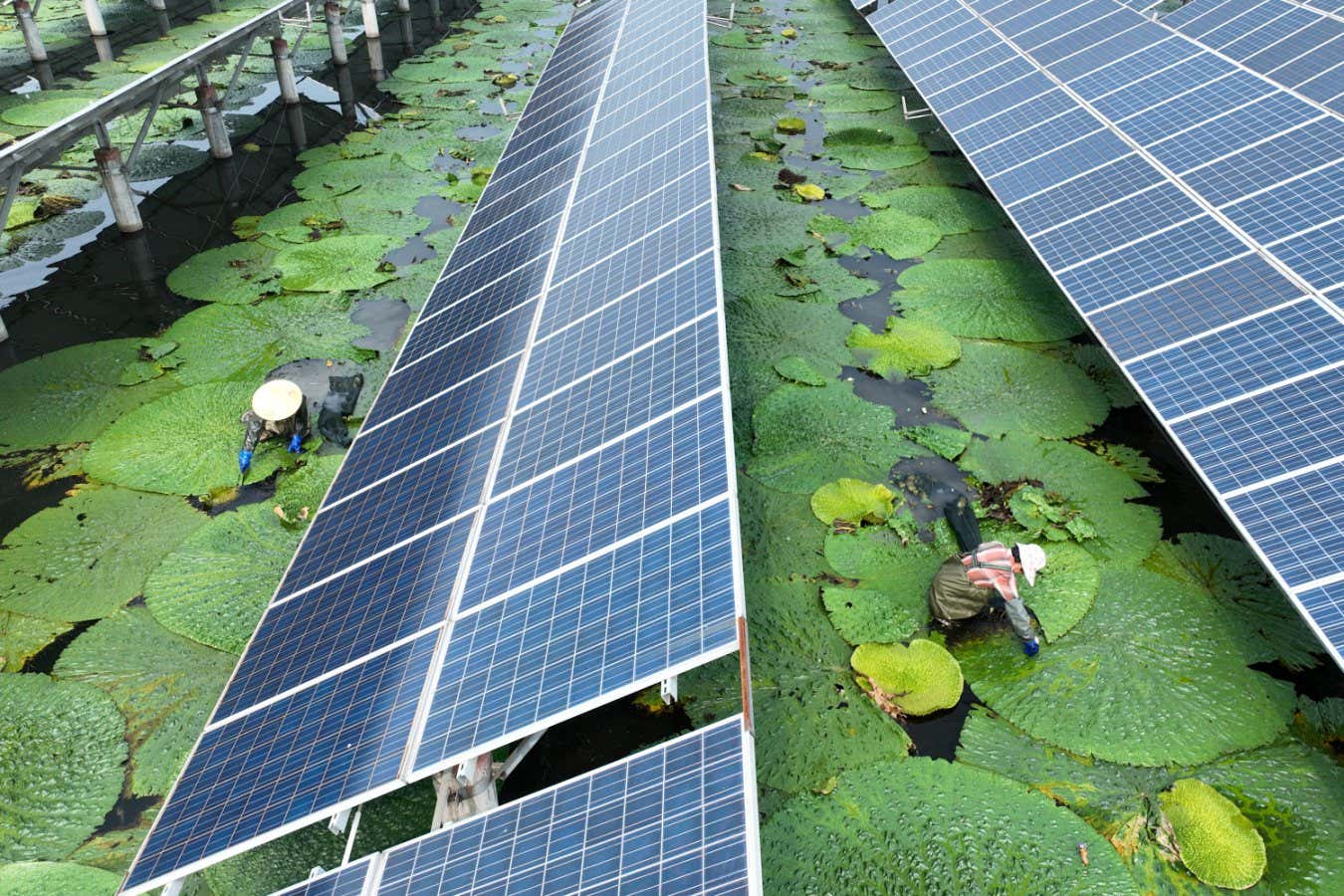
Just 0.3 per cent of the world’s land area would need to be covered in solar panels to meet all energy needs
VCG via Getty Images
Solar power has been on the rise for years, and for good reason. It has become one of the cheapest ways to generate energy almost everywhere, and it is one of the best options for combatting climate change.
Yet it still has its detractors. US energy secretary Chris Wright has claimed solar couldn’t supply all the energy the world needs. This is wildly and embarrassingly wrong, as many have pointed out. In fact, in the long run, solar – including wind, which captures the sun’s energy through a different mechanism – is the only power source that can meet growing energy demand without frying the planet.
On 2 September, Wright posted on social media platform X: “Even if you wrapped the entire planet in a solar panel, you would only be producing 20% of global energy. One of the biggest mistakes politicians can make is equating the ELECTRICITY with ENERGY!”
Now to start with, electricity is measured in terms of the energy it provides, so for practical purposes, yes you can equate electricity with energy.
As climate scientist Gavin Schmidt at the NASA Goddard Institute for Space Studies pointed out on Bluesky, the energy content before use of all the fuels used worldwide in 2024 was 186,000 terawatt-hours. He said Earth receives 6000 times as much energy as that each year.
Moreover, Schmidt said, if you take into account the fact 60 per cent of fossil fuel energy is lost while converting it to useful power, then Earth receives 18,000 times as much energy from the sun as would be needed to meet the current energy consumption.
Of course, existing solar panels capture only around 20 per cent of the sun’s energy, and you can’t put them everywhere. But a 2021 report by Carbon Tracker estimated that 0.3 per cent of the world’s land area – yes, just the land – would be needed to meet the current energy demand from solar alone, which is less than the current land footprint of fossil fuel infrastructure. In principle, solar and wind could supply more than 100 times the current global energy demand, according to the report.
Given meeting the current energy demand with fossil fuels is already causing disastrous global warming, it is fortunate there are not enough fossil fuels on the planet to supply 100 times as much energy. But what about nuclear fusion? Would that be an even better option than solar if it ever becomes viable?
The answer is no. Eric Chaisson at Harvard University estimated even assuming modest growth in global energy demand, in around three centuries the waste heat alone might be enough to warm the planet by 3°C. We are talking here about the waste heat produced as generated energy is used, when you boil a kettle or use a computer, say.
With solar – and wind, tidal and wave power, which are effectively a form of solar – waste heat is not an issue because that energy already ends up as waste heat, whether we use it or not. With other power sources such as nuclear fission, the waste heat is additional heat not already present.
“[Carl] Sagan used to preach to me, and I now preach to my students, that any intelligent civilisation on any planet will eventually have to use the energy of its parent star, exclusively,” Chaisson told New Scientist in 2012.
While three centuries is a long way off, waste heat is already significant regionally. Researchers have estimated summer maximum temperatures in Europe are 0.4°C higher because of waste heat. By 2100, annual average temperatures in some industrialised regions could be nearly 1°C higher because of waste heat – an effect not currently included in climate models.
The bottom line is not only can solar and wind supply all the energy we need for many centuries to come, they are the only technologies that can do so without causing catastrophic warming. Wright couldn’t be more wrong.
Topics:
Source link : https://www.newscientist.com/article/2495031-why-solar-power-is-the-only-viable-power-source-in-the-long-run/?utm_campaign=RSS%7CNSNS&utm_source=NSNS&utm_medium=RSS&utm_content=home
Author :
Publish date : 2025-09-03 20:19:00
Copyright for syndicated content belongs to the linked Source.